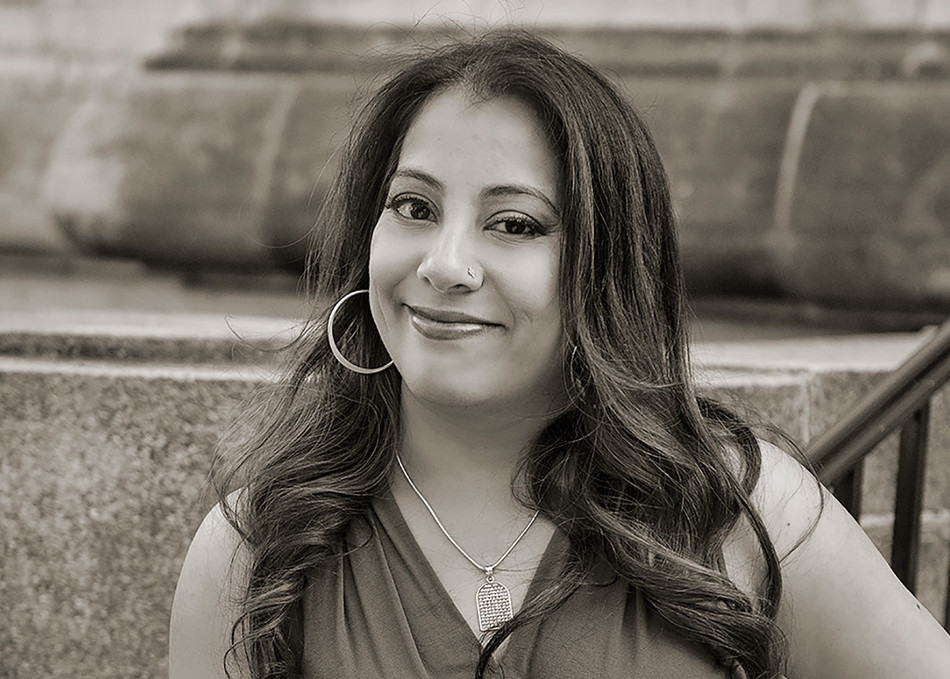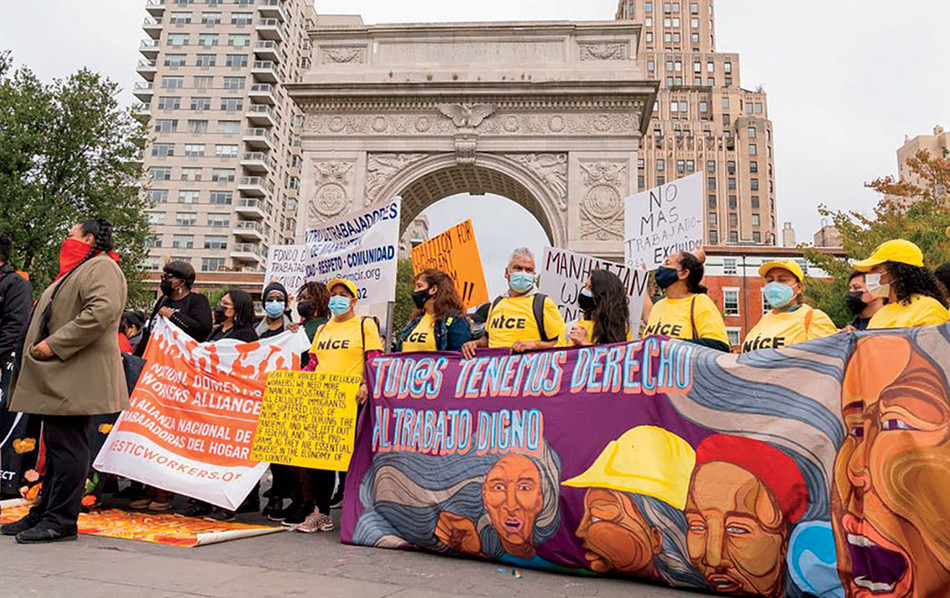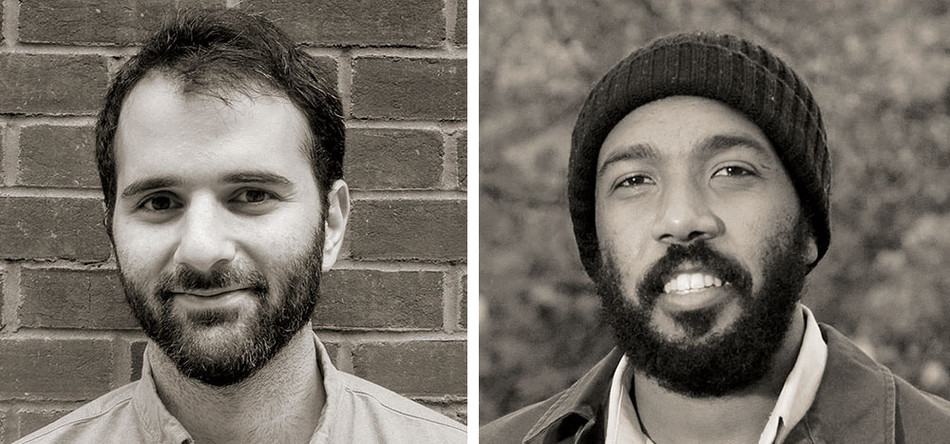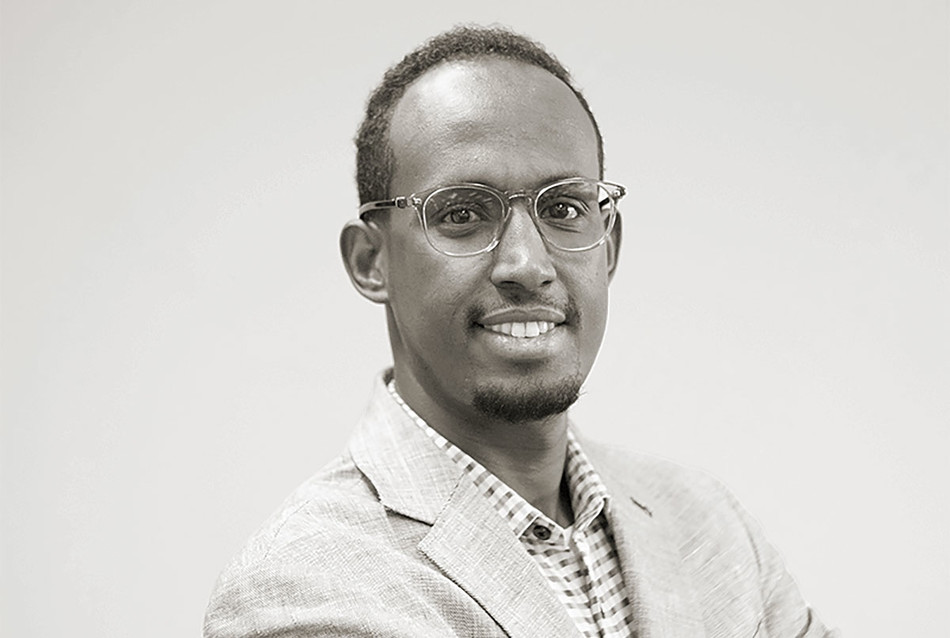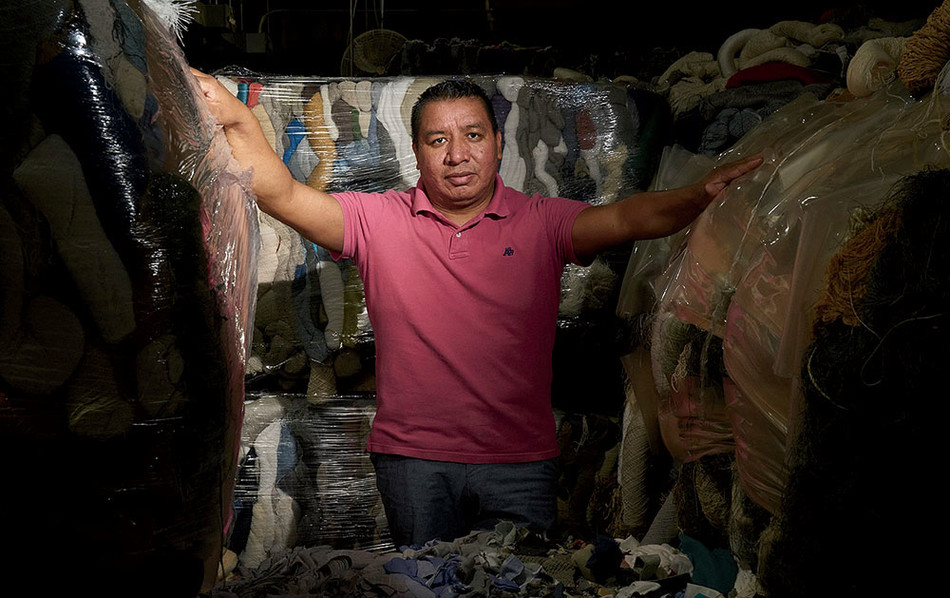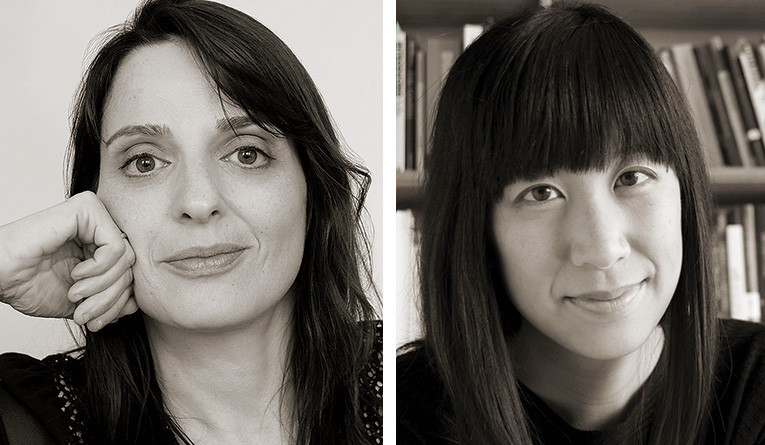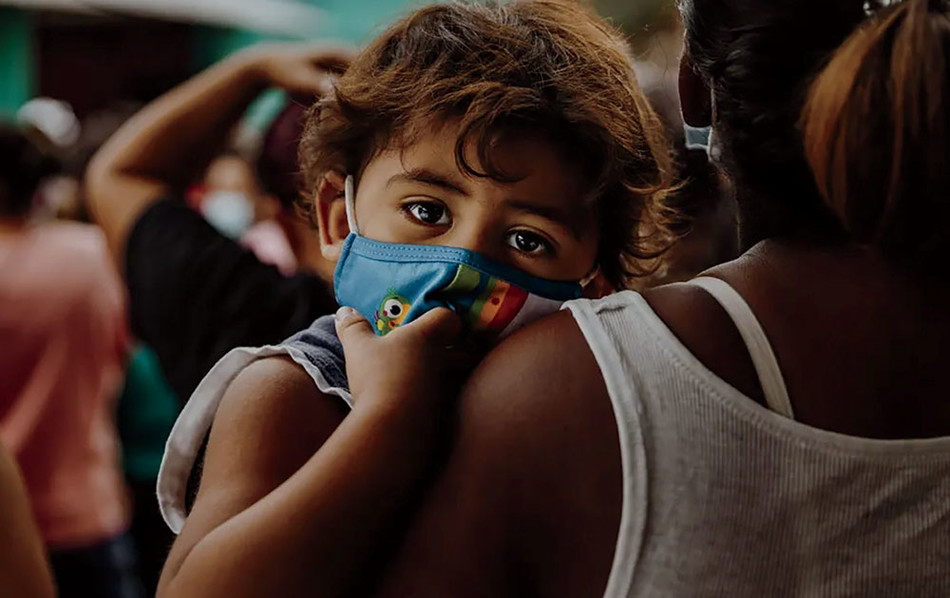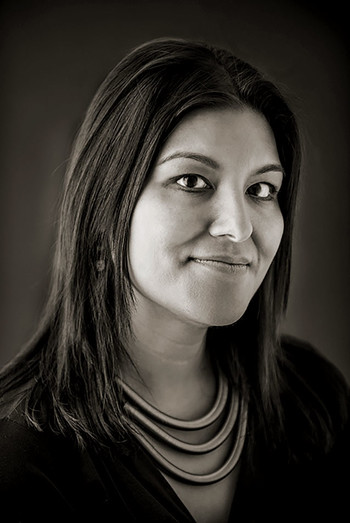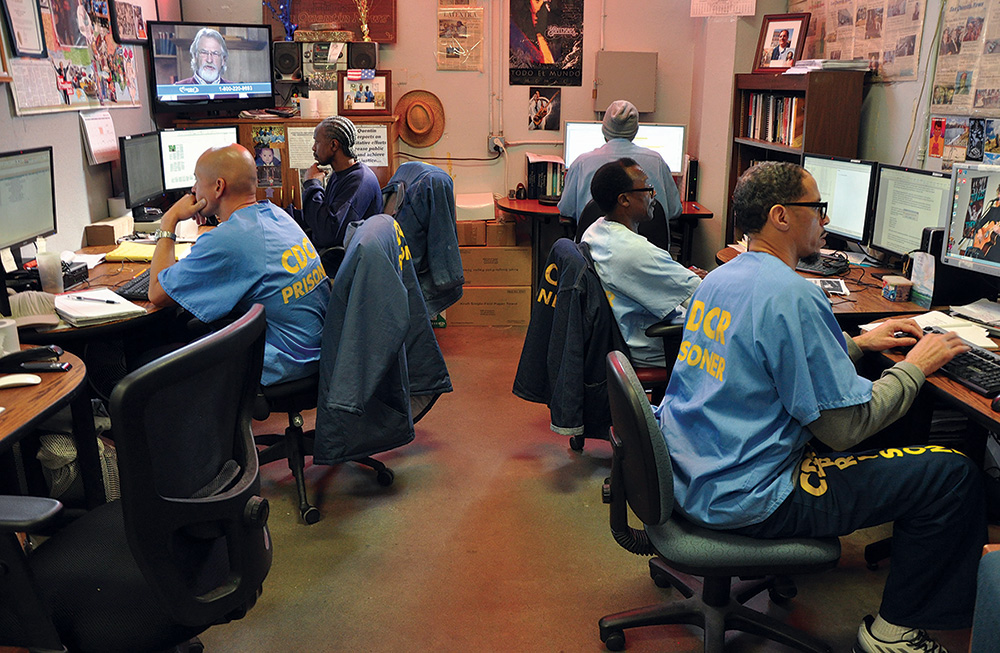
These digital news platforms led by Columbia Journalism School alumni are tackling human-rights issues and serving readers in practical ways.
Prison Journalism Project
Publishing articles by incarcerated reporters
“Over two million people in the US are behind bars — that’s as many people as live in Botswana,” says Shaheen Pasha ’00JRN, a longtime journalist who covers mass incarceration and the US justice system. “Imagine the population of an entire country with a very limited voice in the media and no real way to communicate with the outside world.” Pasha is on a mission to provide that voice through Prison Journalism Project (PJP), a nonprofit that trains incarcerated people to be journalists, then publishes their articles, essays, and poems online.
“We’re trying to create the first nationwide network of prison journalists and give them the tools to be part of the conversation around criminal-justice reform,” explains Pasha, who cofounded the organization in 2020 and serves as its co–executive director.
To date, PJP has published close to two thousand articles by incarcerated reporters at nearly two hundred correctional institutions across the United States. The stories include both hard news, such as reports on COVID rates and violence among inmates, and moving personal essays, such as reflections on the sorrow of spending holidays behind bars. Articles are submitted by mail or through closed e-mail systems, transcribed by volunteers, edited by PJP staff, and published on the organization’s website. Thanks to donations, the nonprofit recently started paying all writers between $25 and $75 per story. “It doesn’t sound like a lot, but $50 pays for a month’s worth of items at the commissary, and it’s a huge, huge deal to be paid for an article as a professional writer,” Pasha says.
In addition to publishing stories, the organization offers training called PJP J-School that teaches students how to write articles. Participants are given lessons in recording personal observations, interviewing, collecting data, reporting news, and other key components of journalism. Because of the pandemic, most instruction has taken place through mailed course materials or over Zoom, although some classes are led by incarcerated instructors inside prisons. Whether or not PJP’s students use their training to become journalists, Pasha believes the lessons they learn are useful and relevant. “They can take the communication, interview, research, writing, and social skills and go into other careers,” she says.
Corey Minatani, who wrote for PJP while serving time in Washington State, says working with the organization gave him not only valuable skills but newfound confidence. “Before, I wasn’t sure I had much to offer in the field of journalism,” he says. “Once I published my first article, about my facility’s humane treatment of inmates during COVID-19, many inmates and several corrections staff thanked me for writing the piece.” He introduced PJP to several of his fellow prisoners and encouraged them to contribute. “I can’t describe the joy and sense of hope when a mentee of mine convinces himself to write and submit,” says Minatani, who since his release has volunteered with PJP while completing a doctorate in theology.
Before founding PJP, Pasha, a Brooklyn native, spent more than a decade reporting in the US and Middle East; in 2006, she led CNN Money’s coverage of the Enron trial. “I was covering law and courts, but I never really thought much about what happens to people after cases end,” says Pasha. She started to take an interest in prison journalism after a close friend received a life sentence. “The first time I went to visit him, I was talking to him — this person I’d grown up with and hung out with since I was a teenager — through a dirty plexiglass window, and he said to me, ‘Shaheen, everybody has a story in here; you’ll just never hear any of them.’”
His words resonated, and years later, when Pasha joined the faculty of the University of Massachusetts Amherst, she began volunteering at the nearby Hampshire County Jail, teaching inmates writing and reporting. “That was when I realized that this should be a national initiative,” she says. Today, in addition to running PJP, Pasha is an assistant professor of journalism at Penn State University and teaches at the nearby Centre County Correctional Facility. She leads Penn State’s chapter of the Inside-Out Prison Exchange Program, which brings undergraduates inside a local correctional facility to learn journalism alongside incarcerated students.
Pasha ultimately hopes that the unique perspectives of PJP participants will enrich mainstream reporting and influence public policy on criminal justice. “We want to provide the opportunity for people who have actually lived through these experiences to have room at the table and be a part of the conversation,” she says. “Right now, a lot of people who have never stepped foot inside a prison are making very big decisions about what happens in prisons.”
Documented
Capturing the lives of immigrants in New York City
Late last year, numerous beneficiaries of the Excluded Workers Fund, a New York State relief program designed to help undocumented workers during the pandemic, realized that money was disappearing from their bank accounts. One woman noticed that over $6,000 had been spent at high-end online retailers, and after reporting the fraudulent charges, she sent a tip to Documented, a nonprofit digital-news site dedicated to immigrant issues in New York City.
The staff started investigating, and soon other victims came forward. “We found that a network of scammers had installed cameras and card-reading devices on ATMs around the city,” says Max Siegelbaum ’16JRN, Documented’s cofounder and co–executive director. “We were able to break the story because of the level of communication and trust we had built with our audience,” he adds.
An investigative journalist and New York City native, Siegelbaum founded Documented in 2018 with his former Columbia Journalism School peer Mazin Sidahmed ’16JRN. He says they came up with the idea largely in response to the election of Donald Trump, who at the time was shaping his presidency around tightened border security and a crackdown on illegal immigration. “There were huge changes happening in US cities that, because of the decline in local news, few outlets were really covering,” explains Sidahmed, himself an immigrant from Sudan who grew up in the United Kingdom. “We decided to do something to provide sustained, local coverage around immigration.”
Sidahmed and Siegelbaum, both of whom had extensive experience reporting on immigration and human rights for traditional newspapers, began investigating everything from immigrant detentions to predatory bail bonds and published some of the resulting articles in Spanish as well as English. “We wanted to make sure that the people at the center of the stories were also reading the stories,” says Sidahmed.
After its launch, the nonprofit undertook an extensive study of the news-consumption habits of New York’s immigrants. “We learned that undocumented Spanish speakers wanted a news site that provided access to resources and that portrayed them with more agency, not just as victims and criminals. We also found that most got their news through informal networks,” says Sidahmed. Since 2019, Documented has distributed a Spanish-language newsletter called Documented Semanal through the messaging platform WhatsApp. It invites readers to send tips and ask questions of immigration lawyers or other experts.
As crime, poverty, and other hardships continue to affect many immigrants and refugees in the New York area, Sidahmed and Siegelbaum are in the process of expanding coverage of the Chinese, Caribbean, and other ethnic communities. They are looking closely at issues surrounding labor and housing, as well as the effects of climate change on immigrant neighborhoods. “Last year we had this horrible storm where people drowned in their basement apartments,” says Siegelbaum. “I don’t think the city has really come to terms with that.”
Sidahmed and Siegelbaum credit the tools of digital journalism with Documented’s ability to reach and expand a niche audience. “It’s lowered the barrier to entry, since we don’t deal with printing fees and distribution,” says Siegelbaum. “We’re also able to experiment with different forms of storytelling and harness the ways people communicate, whether through smartphones, WhatsApp, audio, visuals, or Twitter.” Plus, as a nonprofit, Documented is able to help fill a void left by a decline in local reporting. “The degradation of local news impacts our democracy and affects public services,” says Sidahmed. “It’s been really exciting to not just create local news but reimagine what it can be.”
Sahan Journal
Shedding light on ethnic minorities in the Twin Cities
As a young reporter working in Minnesota, Mukhtar M. Ibrahim ’17JRN was quick to notice that local journalism didn’t capture the richness of his Somali community. Even though the Minneapolis–St. Paul metropolitan area is home to the largest population of Somali-Americans in the United States, they only seemed to make the news when they were involved in murders and other tragedies, says Ibrahim, who was born in Somalia, grew up in Ethiopia and Kenya, and immigrated to Minnesota in 2005. “You still don’t see much on-the-ground coverage around topics like education, health, politics, and civic life — basically, how people are going about their lives.”
Ibrahim is trying to fill that gap as the founder and executive director of Sahan Journal, a nonprofit digital news site that reports on ethnic and racial minorities in the Twin Cities. “Our mission is to provide comprehensive coverage of how these communities are changing and defining what it means to be a Minnesotan,” says Ibrahim, who started the organization in 2019 after attending Columbia Journalism School and working for nearly a decade at local Minneapolis news outlets.
Named after a Somali word for “pioneer,” Sahan Journal was originally designed to focus on immigrants and refugees but now strives to cover all the region’s communities of color — including people who are Asian-American, Latino, Black, and Native American — which represent an increasing number of Minnesotans. “As more people deepen their roots in this state,” says Ibrahim, “we want to make sure we are capturing the voices and experiences of those who call Minnesota home.”
Along with articles focused on urban development, immigrants involved in government, and public education, Sahan Journal profiles Twin Cities residents who might not otherwise make the news. Recent examples include a Somali-born entrepreneur who created a brand of bamboo toothbrushes and a former refugee in the fashion industry.
Since the start of the pandemic, Sahan Journal has also published useful tips about COVID-19 prevention and has made an effort to reduce skepticism about vaccines (for example, dispelling rumors among Muslims that the shots contain pork). “When the vaccine was announced, we tried to make information as accessible as possible by publishing content in English, Hmong, Somali, and Spanish, by collaborating with local community figures, by partnering with nonprofit organizations, and by using social media to amplify our information,” says Ibrahim, who frequently joins forces with traditional news outlets like Minnesota Public Radio to bring Sahan Journal’s stories to a wider audience.
Ibrahim says the trust Sahan Journal has fostered with local communities of color provides the publication with an unusual degree of access to breaking news and eyewitness accounts. After a Somali-American man named Dolal Idd died in a shootout with the police in late 2020, it was Sahan Journal that broke the story of how, afterward, officers raided the home of Idd’s parents in the middle of the night, bound their wrists, and yelled at their younger children before informing them of their son’s death. “The family invited us into their living room and told us what happened,” says Ibrahim, who co-reported and cowrote the resulting article. “In response to our coverage, the county sheriff’s office took the unusual step of releasing the bodycam footage of the raid.”
Right now, Ibrahim is fundraising to expand his small staff in the hopes of covering regions outside of Minneapolis and St. Paul. “As more people move out of cities because of a lack of housing or opportunities, we want to capture life in rural areas as well,” he says.
Ibrahim emphasizes that being a nonprofit supported by grants and donations enables Sahan Journal to focus on bringing under-covered stories to light without having to cater to commercial tastes and depend entirely on advertising or subscription revenue. “The nonprofit model allows us to be mission-driven,” he says. “It valorizes the independence of journalism.”
Economic Hardship Reporting Project
Supporting freelance journalists covering poverty
In the United States, working as a freelance journalist often means dealing with unpredictable assignments, delayed payments from clients, and other challenges. Many people barely make ends meet, and the problem has only gotten worse in recent years, says Alissa Quart ’97JRN, the executive director of the Economic Hardship Reporting Project (EHRP), a nonprofit that hires struggling journalists to report on economic inequality.
“Around thirty thousand newspaper reporters lost their jobs between 2008 and 2015,” explains Quart, herself a journalist and poet. “Media tends to be made by rich people, for middle-class people, about poor people. We exist in part to change that equation so more of the people writing about the working poor or struggling middle class are themselves working poor or struggling middle class.”
EHRP was founded in 2012 by the writer and activist Barbara Ehrenreich in response to the 2008 financial crisis and the recession that followed. Inspired by the Federal Writers’ Project, which created jobs for thousands of unemployed writers during the Great Depression, EHRP hires journalists and other creative professionals who are in need of work to cover the effects of poverty in the United States. Around two-thirds of contributors are women, and almost 40 percent are people of color. “We help freelance reporters, particularly from marginalized communities, earn a living and also be read, heard, and recognized,” says Quart.
Deborah Jian Lee ’08JRN, a former Columbia Journalism School instructor and an editor at EHRP, says the nonprofit’s mission resonates with some of her own experiences as a freelancer. “What appealed to me was how the organization supports independent journalists in their work, gives them a lot of freedom, and covers subject areas that are often underreported in America,” says Lee.
EHRP’s reporting takes a variety of forms, including investigative articles, personal essays, TV segments, documentaries, podcasts, illustrations, and poems. The organization partners with many established media outlets — from the New York Times to Columbia Journalism Review — to co-publish the content, in addition to featuring it on EHRP’s own website. It’s a way to reach larger audiences and “people who aren’t necessarily tuned in to poverty-related material,” explains Quart.
Last year, EHRP produced an essay that appeared on the home page of the Washington Post. In it, writer Bobbi Dempsey, a reporting fellow with EHRP, wrote about her hearing-impaired mother’s inability to obtain new hearing aids because the devices were not covered by Medicaid or Medicare. Other notable EHRP work includes the podcast Going for Broke, which features interviews with people who have fallen on hard times, and the Emmy-winning documentary Jackson, about low-income women navigating abortion access in Mississippi. Many projects focus on rural communities in the Midwest and South, where local news outlets have been disappearing at a disproportionate rate.
For Quart, who joined EHRP in 2013 and, like Lee, used to teach at Columbia Journalism School, the nonprofit was a natural career fit. “I’ve always been interested in where the economy and money intersect with people’s lives,” says Quart, who has written five nonfiction books, including the forthcoming Bootstrapped: Liberating Ourselves from the American Dream.
Through their work with EHRP and as independent journalists, Quart and Lee strive to bring empathy and nuance to the subject of poverty. “It’s often hard for people to understand how broader systems impact inequality, so my goal is to tell human stories,” says Lee. Quart believes that giving cash-strapped journalists opportunities to report on the hardships that personally affect them can make for more enriched reporting. “This has been a terrible period in American history, and we’ve developed fatigue around suffering,” she says. “I think that in order to make stories resonant, they have to feel new and evocative and lived-in.”
Epicenter-NYC
Serving Queens and beyond with news it can use
As a resident of Jackson Heights, Queens, a bustling, densely populated neighborhood known for its multiculturalism, S. Mitra Kalita ’00JRN was devastated by what the pandemic did to her community. “What I love about Jackson Heights is what made it the perfect breeding ground for COVID-19,” says Kalita, a veteran journalist with more than twenty-five years of newsroom experience. “At one point it was known as the epicenter of the epicenter.”
In their many years of living in the neighborhood, Kalita and her husband, artist Nitin Mukul, had established themselves as trusted community members. So it was no surprise that when the pandemic struck, the couple began receiving numerous questions about where to find masks, how to apply for Paycheck Protection Program loans, and other practical matters.
Kalita, who at the time was a senior vice president at CNN overseeing the network’s digital arm, says she didn’t feel that the mainstream media was providing the kinds of useful, everyday tips that could genuinely help her community. “Articles would tell a story, but they wouldn’t tell you the solution to a problem or where to get resources,” she explains. In response to what she calls a “dearth of information and communication,” Kalita and Mukul founded Epicenter-NYC, a community-focused media platform designed to address the utilitarian concerns of a diverse body of New Yorkers.
Epicenter-NYC, whose motto is “Doing good for the hood,” started as a newsletter in the spring of 2020 with an e-mail list of around fifty people, most of them Jackson Heights residents. Since then, it has added thousands of subscribers from across the city, introduced a website, launched a weekly podcast, and started a second newsletter, called The Unmuted, targeted at parents of public-school students. In addition to covering the evolving pandemic and other breaking news, Epicenter-NYC spotlights local businesses, profiles area artists, and explains how new city policies and government budget decisions may affect New Yorkers.
Kalita and her staff also connect readers to vital resources such as immigration lawyers and information on filing health-insurance claims. When the COVID-19 vaccine was introduced in early 2021, Epicenter-NYC helped many Queens residents schedule their shots online and even organized transportation to vaccination sites. “The rollout was so bumpy and confusing,” says Kalita. Many people “either didn’t have Internet or were working several jobs and couldn’t find appointments that fit into their schedules.”
Last year, in an effort to reach more readers, Kalita, who is Indian-American and grew up in Long Island, Puerto Rico, and New Jersey, cofounded URL Media, a network of news outlets run by journalists of color that cross-publish each other’s content and share audiences. (Sahan Journal and Documented, both featured in this article, are members.) The for-profit business also offers recruiting and coaching services for media companies seeking to develop more racially diverse workforces.
Kalita says that all URL Media members, including Epicenter-NYC, are driven by a commitment to serve their audiences in practical ways. “I think that for a long time, media outlets have felt that knowledge alone is power, meaning we’ll tell you things and then you’ll know,” she explains. “But the actual delivery of a service hand-in-hand with information is what can transform power. You can tell people the lottery for kindergarten enrollment is open, or here’s how your child can take the test for a gifted-and-talented program, but if someone doesn’t read English or missed the e-mail alert from city officials, then that information isn’t really empowering. What Epicenter-NYC and the rest of us are trying to do is put more information in more places and make that information actionable.”
This article appears in the Fall 2022 print edition of Columbia Magazine with the title "Reporting on the Margins."
